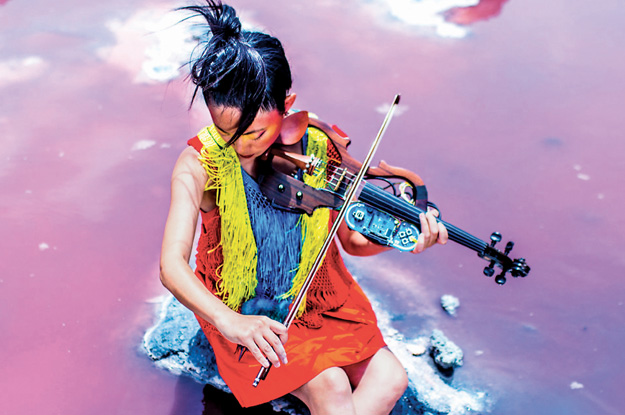This article is adapted from Americas Quarterly’s print issue on Venezuela after Maduro
Pauchi Sasaki debuted a haunting string composition called Cuarto Blanco at a shopping mall in Lima. Not far from there, she produced El Depósito, a piece for violin that incorporates the ambient sound of an abandoned mining storage facility where it was recorded. In Iquitos, in the Peruvian Amazon, she performed her concert Contraestructruas in front of a pulsating light projection on a wall of the historic Plaza de Armas. She has played for crowds as small as 15 in a public restroom, and as large as 1,500 at the opera house in Lima.
It’s safe to say that Sasaki, a 36-year-old Peruvian composer, violinist and multimedia pioneer, is not one to be pigeonholed. Nikkei, Andean, global, local — Sasaki’s art is a reflection of multiple identities, multiple cultures, multiple aesthetic strands.
Trained in violin in leading schools in Peru and New York, Sasaki’s music draws as much inspiration from geographical shapes and cultural norms as from classical composition. A mix of electro-acoustic sounds, ambient recordings, and instruments of her own invention, Sasaki’s multimedia experiments explore what happens when outdoor urban environments are filled with unexpected resonances. For Sasaki, these experiments represent an open door to the imagination of creator and audience alike.
Sasaki’s forthcoming project is K’uku, a composition for string quartet, percussion and live electronics featuring video produced by her sister and collaborator, Nomi Sasaki. The site-specific work is designed for Umpire Rock, a large geological formation in New York’s Central Park, that for the piece will be reimagined as a miniature Andean peak. Musicians will perform from different positions on the rock and at its base, as a video map traces the surfaces of the formation. According to Sasaki, K’uku, which means “unripe fruit” in Quechua, explores the early stages of the creative process: the moment at which an unripe fruit begins to produce an explosion of colors, flavors and nourishment.
—
Zubieta is director of the music program at Americas Society. Russell is a senior editor at AQ.



